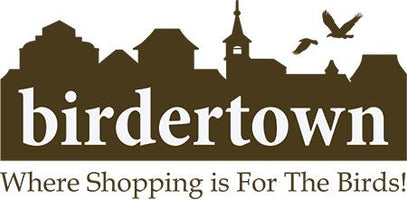
When and Where to Spot Owls
While we love all types of birds at Birdertown, there is something truly wonderful about watching owls. Often associated with wisdom, these are beautiful birds of prey that are often exciting to see. With owls typically being nocturnal and many having excellent camouflage, they can be a bit difficult to spot at times. Thus, let’s look at some tips for when and where to spot owls.
Understand Your Local Owl Species
The first key to knowing when and where to spot owls is to get a sense of what types of owls are in your area. There are nineteen different owl species in the United States. However, there tend to only be a few species in each area. Getting to know those around you will give you a better sense of what you are looking for and where to find them.
There are owls in virtually every type of habitat. However, these are the most frequently cited owls you may encounter in the U.S.
- Great Horned Owl (found throughout 48 contiguous states)
- Barn Owl (widespread but less prevalent in northern states)
- Eastern Screech Owls (most prevalent in deciduous woodlands in eastern U.S.)
- Western Screech Owls (west Texas north to western Montana and Alaska)
- Barred Owls (Minnesota to Texas and eastward from that line)
When identifying your local owl species, the big thing to determine is what they look like and what habitats they tend to frequent.
Identify the Nearest Owl Habitat
The next step in determining when and where to find owls is to seek out their ideal habitats. Owls can be more difficult to spot than many birds and going to where they live will certainly help expedite the process.
Depending on where you live, you may not have to go far. For example, I grew up in rural Louisiana. It was not uncommon to spot Barn Owls or Eastern Screech Owls in the backyard or a short walk from home. Some owls like the Great Horned Owl can be found in many different habitats, increasing the likelihood of seeing them near your home.
However, you are more likely to see owls if you go to their preferred territory. Going to fields (particularly during winter when small animals can more easily be seen) will increase your chance of seeing a Barn Owl. If you live in Arizona, venturing to a saguaro forest or rolling foothills with mesquite can increase your ability to see an Elf Owl.
Another thing to look for when trying to spot an Owl’s hangout is Owl Pellets. They throw up these pellets and you find them on the ground under their perches. Then you know that is where an owl might be spotted.
Answer the following questions about each local owl species:
- Where does this owl tend to live?
- Where does this owl tend to feed?
Focus Efforts on Dusk and Dawn
Owls are nocturnal creatures. Thus, the best times to be able to spot them are dusk and dawn. Dusk is when they typically begin their day, so to speak. You can often spot them traveling to their favorite feeding place. By dawn, they typically travel back home.
When looking for owls, use binoculars to look at any place where an owl could perch and scan for prey. Owls have great camouflage, so look carefully for an owl’s silhouette. Ideal locations include things like outcroppings in fields, meadows, lakeshores, along rivers, and sand dunes. Again, knowing where your local owl species likes to dine matters.
Hawks and owls often target similar types of prey. Thus, if there is a location where you see hawks during the daytime, this may prove a valuable perch for owls at night as they hunt for food. Depending on your local owl species, man made structure can be good as well. For example, Barn Owls can be seen in old barns, Snowy Owls on water towers, and Great Horned Owls in city parks.
Consider Purchasing an Owl House
One way to get a better view of owls is to purchase an owl house. For example, this Screech Owl House provides a perfect nesting place for this species of bird. Both Eastern Screech Owls and Western Screech Owls are cavity nesting owls that can be drawn to a nesting box.
This can help encourage these owls to move into your backyard. You should install an owl box about 10 to 15 feet up in a tree, placing a few inches of wood shavings in the bottom (dried pine needles are fine too). This will make it the most welcoming environment for these owls.
Hopefully these tips help you identify the best places to spot owls in your local area. Of course, we always welcome everyone to join our birding community and follow us for more interesting bird information here at Birdertown.
